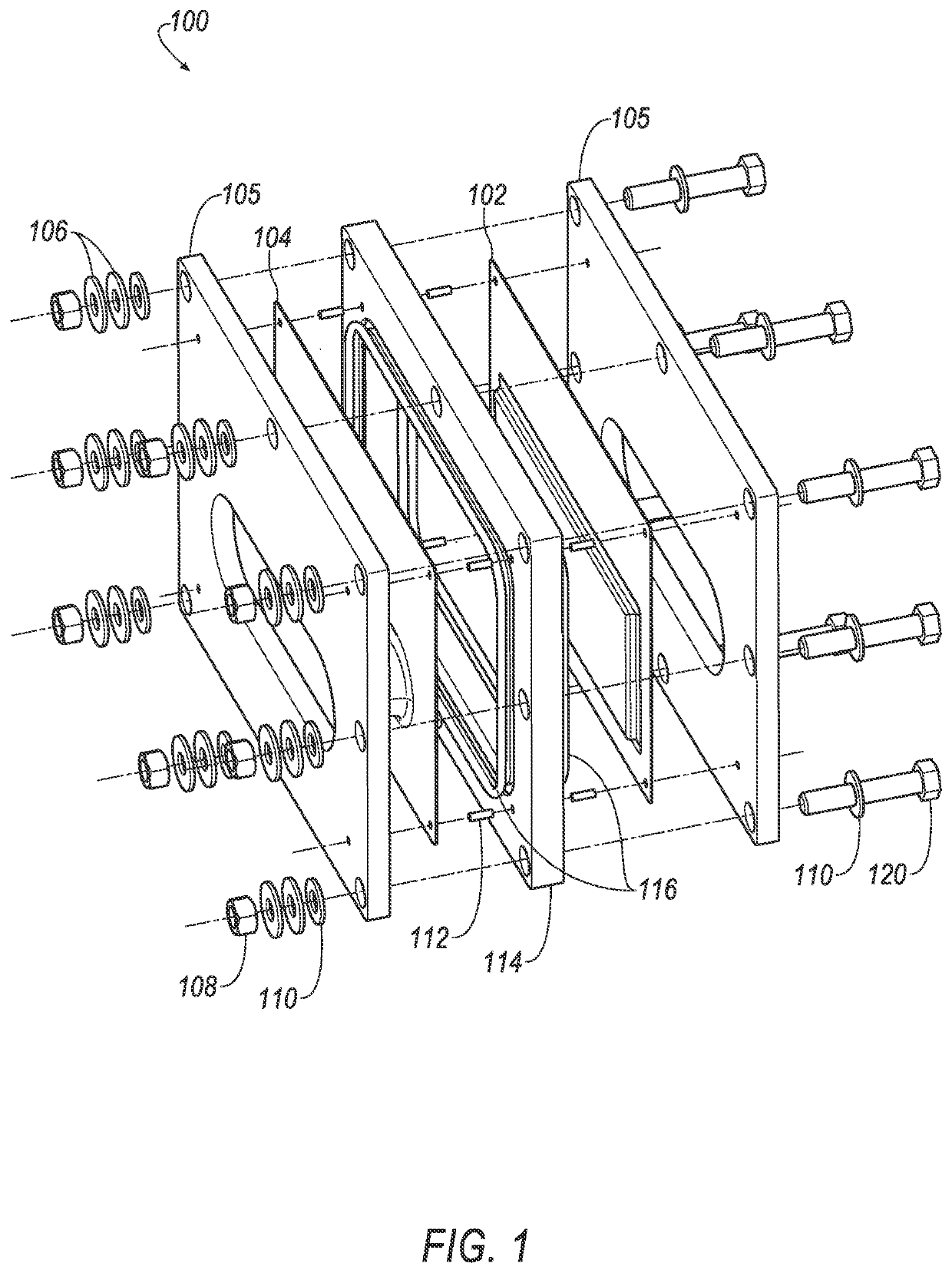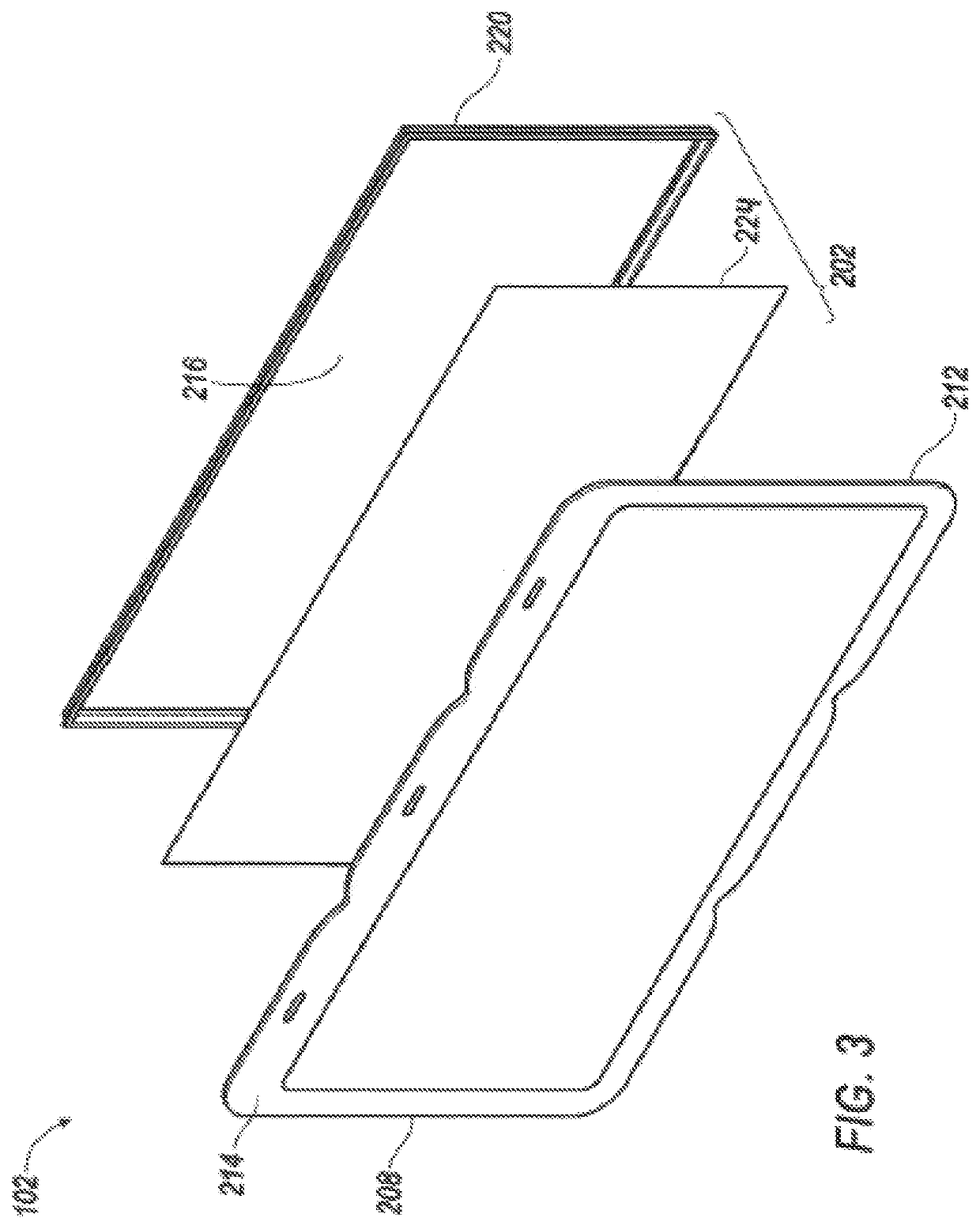Bipolar electrode comprising a loaded carbon felt
a carbon felt and bipolar electrode technology, applied in the direction of cell components, final product manufacturing, sustainable manufacturing/processing, etc., can solve the problems of reducing battery capacity and cycle life, negatively affecting battery performance as a storage device for electrical energy, and severely limited battery performance of traditional rechargeable zinc-halide batteries
- Summary
- Abstract
- Description
- Claims
- Application Information
AI Technical Summary
Benefits of technology
Problems solved by technology
Method used
Image
Examples
example 1
on of Loaded Carbon Felt
[0236]A mixture of 35 g poly(diallyldimethylammonium chloride) (low molecular weight), 35 g nano27 graphite (Asbury Carbons; Asbury, N.J.), 4000 g of isopropanol, and 3500 g of water was prepared. (The water was pre-mixed in the commercially available polymer solution). The weight percentages of the solution were accordingly 0.46 wt % poly(diallyldimethylammonium chloride), 0.46 wt % nano27 graphite, 52.8 wt % ethanol, and 46.2 wt % water. The mixture was thoroughly mixed and sonicated. Three equivalent pieces of 6.4 mm thick, dry PAN-fiber-based carbon felt—which was pre-modified by carbonizing, activating and graphitizing processes—were dipped in the mixture and submerged for about 15 seconds. The pieces were removed and the excess mixture was drained. Each piece, Test Samples 1, 2 and 3 were placed on a drying rack and dried in a fume hood for 24 hours. The felts were weighed to measure the uptake of polymer and nanocarbon materials. The uptake of the poly...
example 2
on of Bipolar Electrodes
[0238]Bipolar electrodes were prepared using the loaded carbon felts of Example 1. The carbon felts, Test Samples 1, 2 and 3, and Control Sample 1 were each attached to titanium plates to form bipolar electrodes. The electrode plate and terminal plate were formed of titanium metal that was coated with TiC (commercially available from Titanium Metals Corporation, Exton, Pa.) and formed into plates having 45° chamfered corners (length ˜13.5 cm, width ˜8.375 cm, thickness ˜0.005 cm). To attach the carbon felts, 5 mL of glue was applied to the cathode surface of the titanium plates and the loaded carbon felt was placed on top of the glue and 5 psi of pressure was applied to the top of the loaded carbon felt. The glue was then dried for 1 hour. The glue was 61.11 wt % acetone, 14.44 wt % Kynar 2750, 7.78 wt % Elvacite 4111, and 16.67 wt % Timrex KS6 graphite.
example 3
on of Test Cells
[0239]The bipolar electrodes of Example 2 were incorporated into test cells. On an outer facing surface of each of the bipolar electrode plates (of Example 2), a conductive cup-shaped member was laser welded such that the center of the cup-shaped member was approximately aligned or centered with the center of the reduced surface of the cathode cage. Thus, this component served as a terminal cathode assembly and bipolar electrode for the test cell. A terminal anode assembly was likewise formed of a terminal endplate having dimensions substantially the same as those of the bipolar electrode plate with an elliptical cup-shaped member that was laser welded to the outer surface of the terminal anode endplates such that the center of the cup-shaped member was approximately collinear with the center of the cup-shaped member of the terminal cathode assembly. Conductive cup-shaped members were formed from stamped titanium carbide material. The test cells were finally assemble...
PUM
| Property | Measurement | Unit |
|---|---|---|
| mean particle diameter | aaaaa | aaaaa |
| thickness | aaaaa | aaaaa |
| wt % | aaaaa | aaaaa |
Abstract
Description
Claims
Application Information
 Login to View More
Login to View More - R&D
- Intellectual Property
- Life Sciences
- Materials
- Tech Scout
- Unparalleled Data Quality
- Higher Quality Content
- 60% Fewer Hallucinations
Browse by: Latest US Patents, China's latest patents, Technical Efficacy Thesaurus, Application Domain, Technology Topic, Popular Technical Reports.
© 2025 PatSnap. All rights reserved.Legal|Privacy policy|Modern Slavery Act Transparency Statement|Sitemap|About US| Contact US: help@patsnap.com



